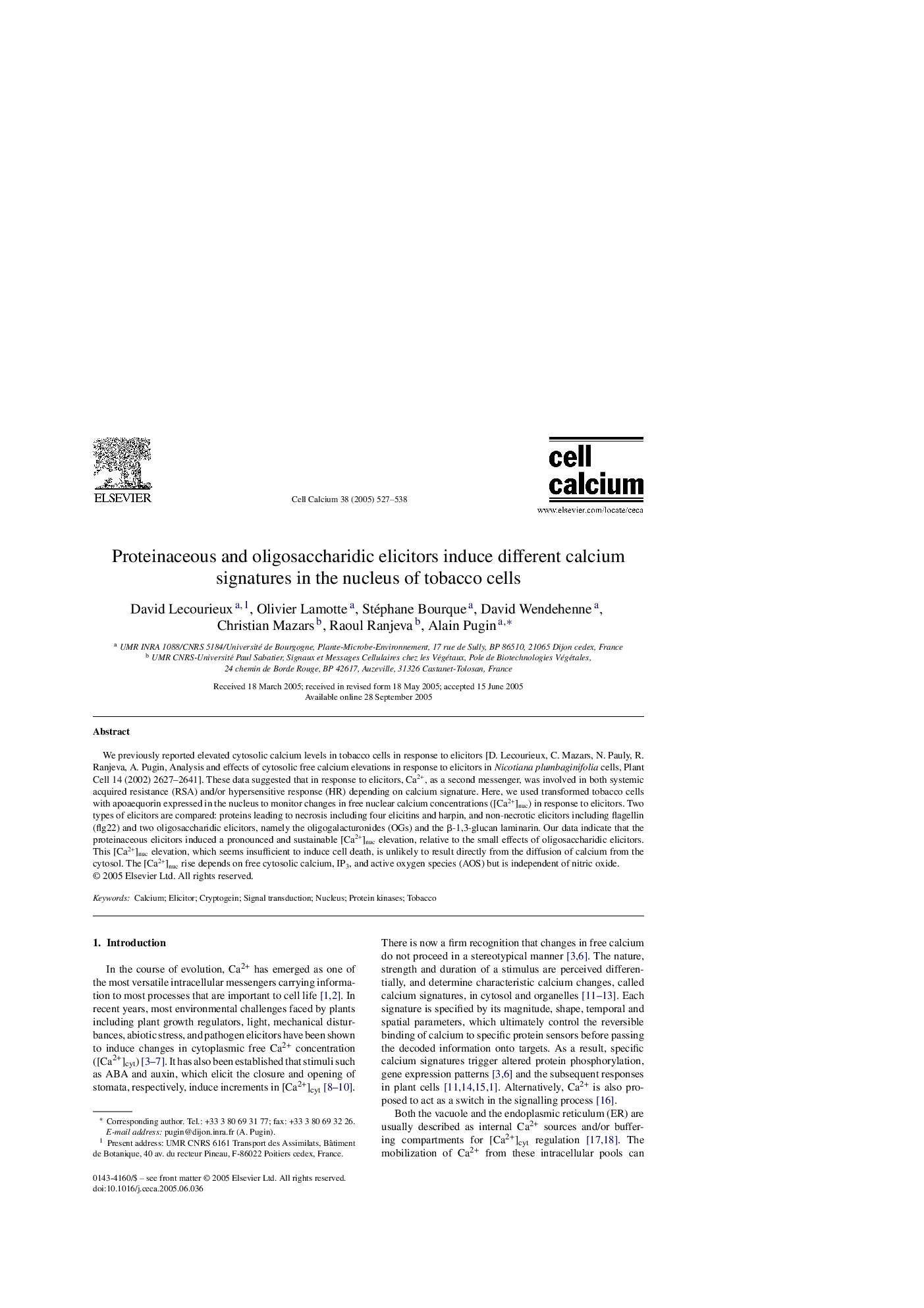| Article ID | Journal | Published Year | Pages | File Type |
|---|---|---|---|---|
| 10926512 | Cell Calcium | 2005 | 12 Pages |
Abstract
We previously reported elevated cytosolic calcium levels in tobacco cells in response to elicitors [D. Lecourieux, C. Mazars, N. Pauly, R. Ranjeva, A. Pugin, Analysis and effects of cytosolic free calcium elevations in response to elicitors in Nicotiana plumbaginifolia cells, Plant Cell 14 (2002) 2627-2641]. These data suggested that in response to elicitors, Ca2+, as a second messenger, was involved in both systemic acquired resistance (RSA) and/or hypersensitive response (HR) depending on calcium signature. Here, we used transformed tobacco cells with apoaequorin expressed in the nucleus to monitor changes in free nuclear calcium concentrations ([Ca2+]nuc) in response to elicitors. Two types of elicitors are compared: proteins leading to necrosis including four elicitins and harpin, and non-necrotic elicitors including flagellin (flg22) and two oligosaccharidic elicitors, namely the oligogalacturonides (OGs) and the β-1,3-glucan laminarin. Our data indicate that the proteinaceous elicitors induced a pronounced and sustainable [Ca2+]nuc elevation, relative to the small effects of oligosaccharidic elicitors. This [Ca2+]nuc elevation, which seems insufficient to induce cell death, is unlikely to result directly from the diffusion of calcium from the cytosol. The [Ca2+]nuc rise depends on free cytosolic calcium, IP3, and active oxygen species (AOS) but is independent of nitric oxide.
Related Topics
Life Sciences
Biochemistry, Genetics and Molecular Biology
Cell Biology
Authors
David Lecourieux, Olivier Lamotte, Stéphane Bourque, David Wendehenne, Christian Mazars, Raoul Ranjeva, Alain Pugin,
